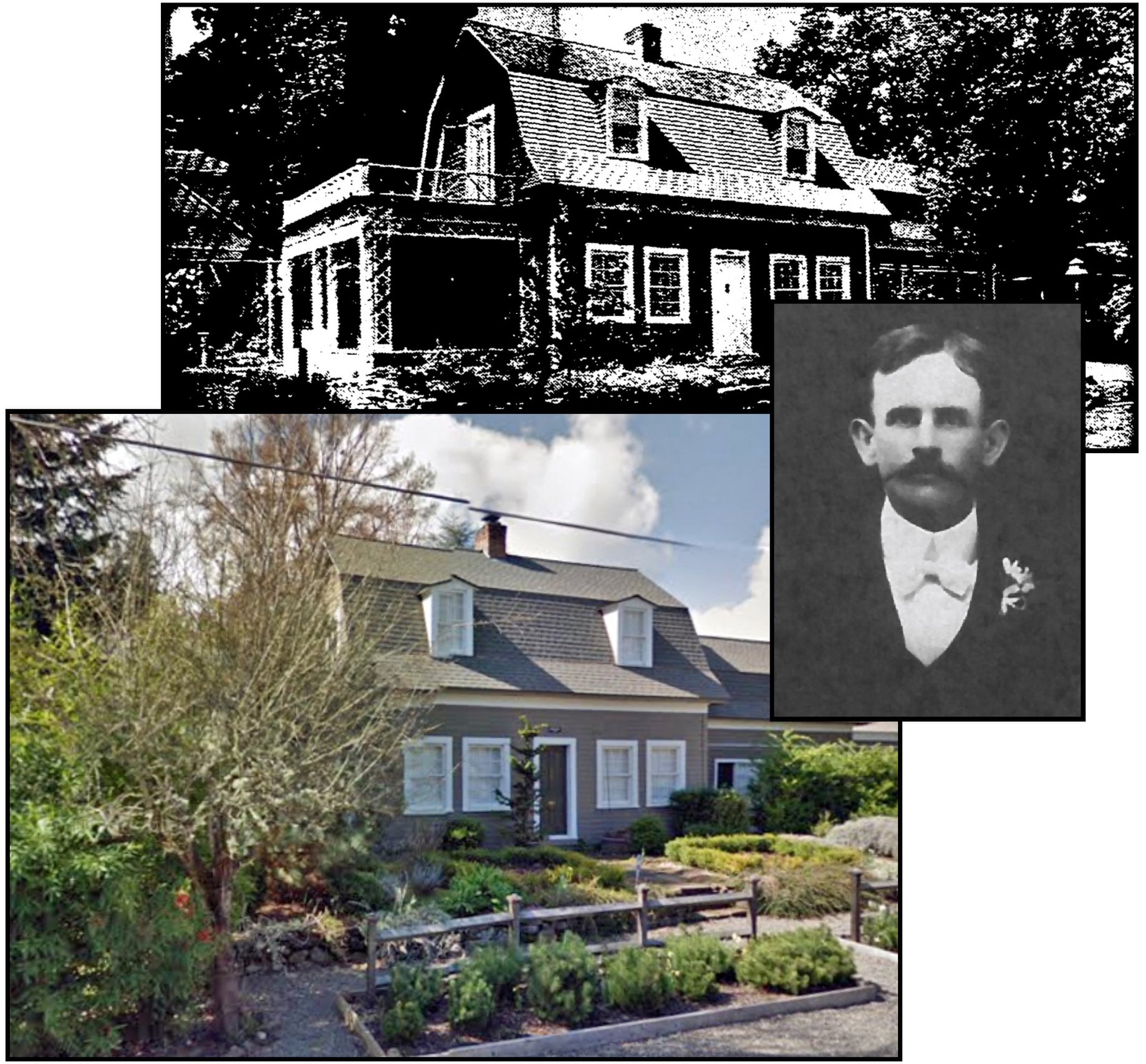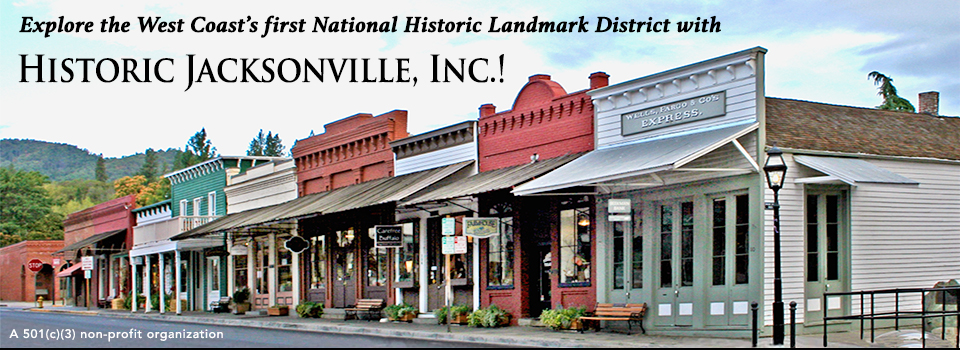
July 2, 2019
The lovely home at 460 East C Street in Jacksonville, known as the “Carriage House,” is actually a combination of structures. The property itself was originally part of Max Mueller’s 465 E. California Street home. Around the 1880s, Mueller, or an earlier owner, constructed the barn that comprises the central portion of the Carriage House. In 1908, after Mueller’s death, his wife, Louisa, sold the property to William T. Grieve, shown here. Grieve, a Jackson County Assessor, built the carriage house, the lower right portion pictured. In the early 1960s, George and Doris Brewer acquired the entire property, a derelict rental with a yard filled with junked cars. After restoring the Mueller House, they decided to divide the lot and construct the existing house. Before retiring, George had worked in the logging industry and then owned and operated Brewer Tractor Company. He tapped his experience and skills, jacked up the old barn, put it on skids, hooked it to his Jeep, and pulled it to a cement foundation he had poured. Using skids and a tractor, George and Doris moved the carriage house from its original location, turned it 180 degrees, and attached it to the barn. To create the “finished product,” they salvaged lumber from the old Table Rock Saloon, doors and hardware from a Medford home, 1800s Jacksonville brick from an Eagle Point hardware store, and remodeled the old outhouse into a garden house. Together, as leaders of the Pioneer Sites Foundation, they were part of the movement that led to Jacksonville’s Historic Landmark District. George was both Mayor and City Councilor and involved in the restoration of the U.S. Hotel and the Methodist Episcopal Church. Doris was instrumental in stopping the estate auction of all the original contents of the Beekman House, and together they assisted in restoring the Beekman House and opening it to the public.
